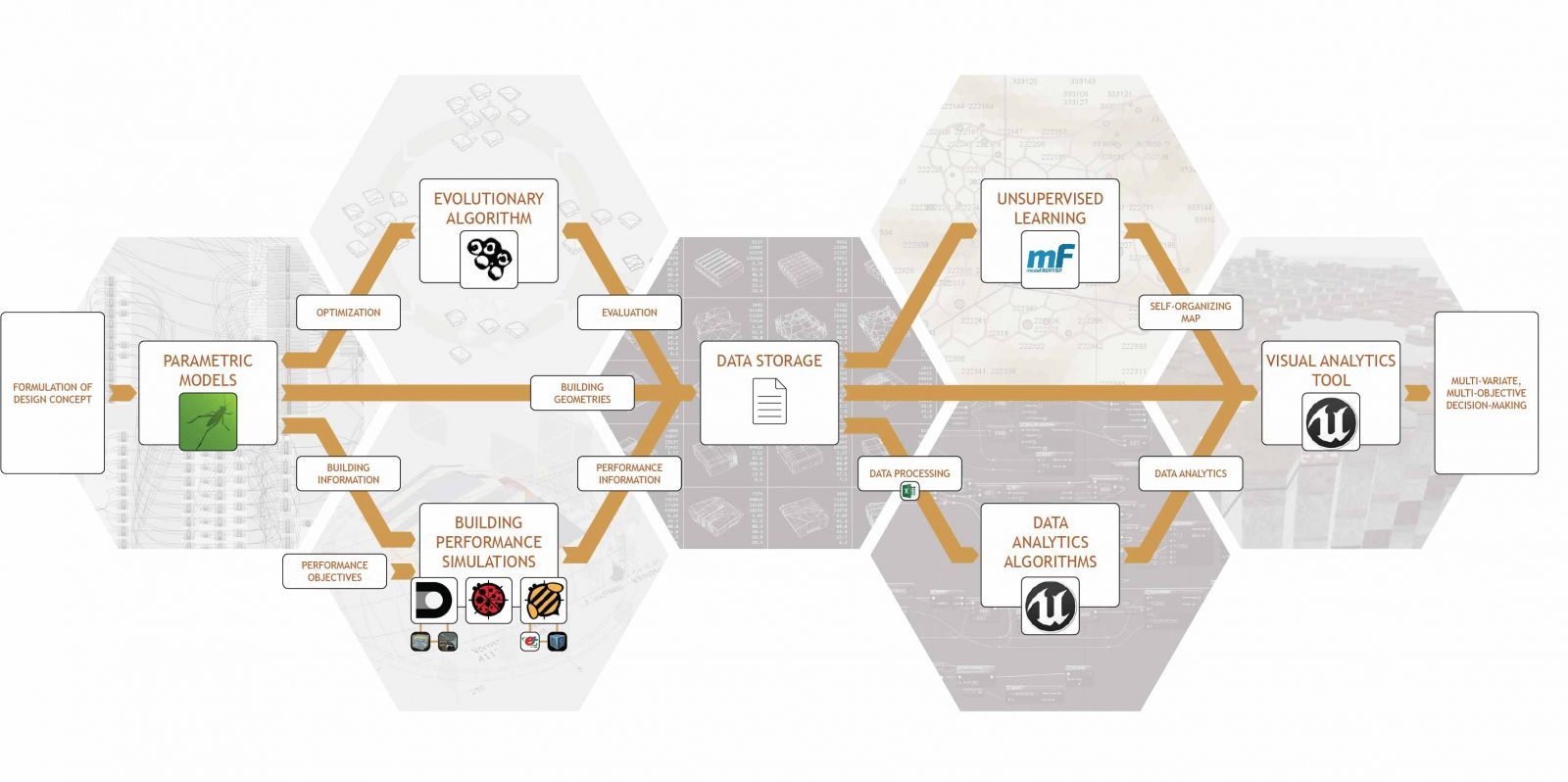Jamal van Kastel, graduate student in Building Technology at the Delft University of Technology, used modeFRONTIER as a part of a computational design workflow. This allowed to generate and process building performance data of a large set of sports hall design alternatives and visualize this data in a highly-interactive, game-like data environment.
The computational design workflow uses generative design processes in conjunction with building performance simulations to generate a large data set of sports hall design alternatives. By analyzing this data set architects are able to make performance-driven design decisions in the early design process. Existing data analytics methods are not accessible for practitioners in the field of architecture, however, because interconnected analysis of quantitative and qualitative building performances is not facilitated.

This research proposed a highly interactive, intuitive data environment that visualizes high-dimensional data alongside building geometries. The data environment integrates all buildings’ geometries alongside data analytics methods in a single viewport. Through multiple means of interaction users can analyze the design space to explore both qualitative and quantitative performances. modeFRONTIER data analysis and visualization tools gave insight into the high-dimensional data sets in an efficient and meaningful manner, which was especially useful during the early development phase of the computational design flow.
